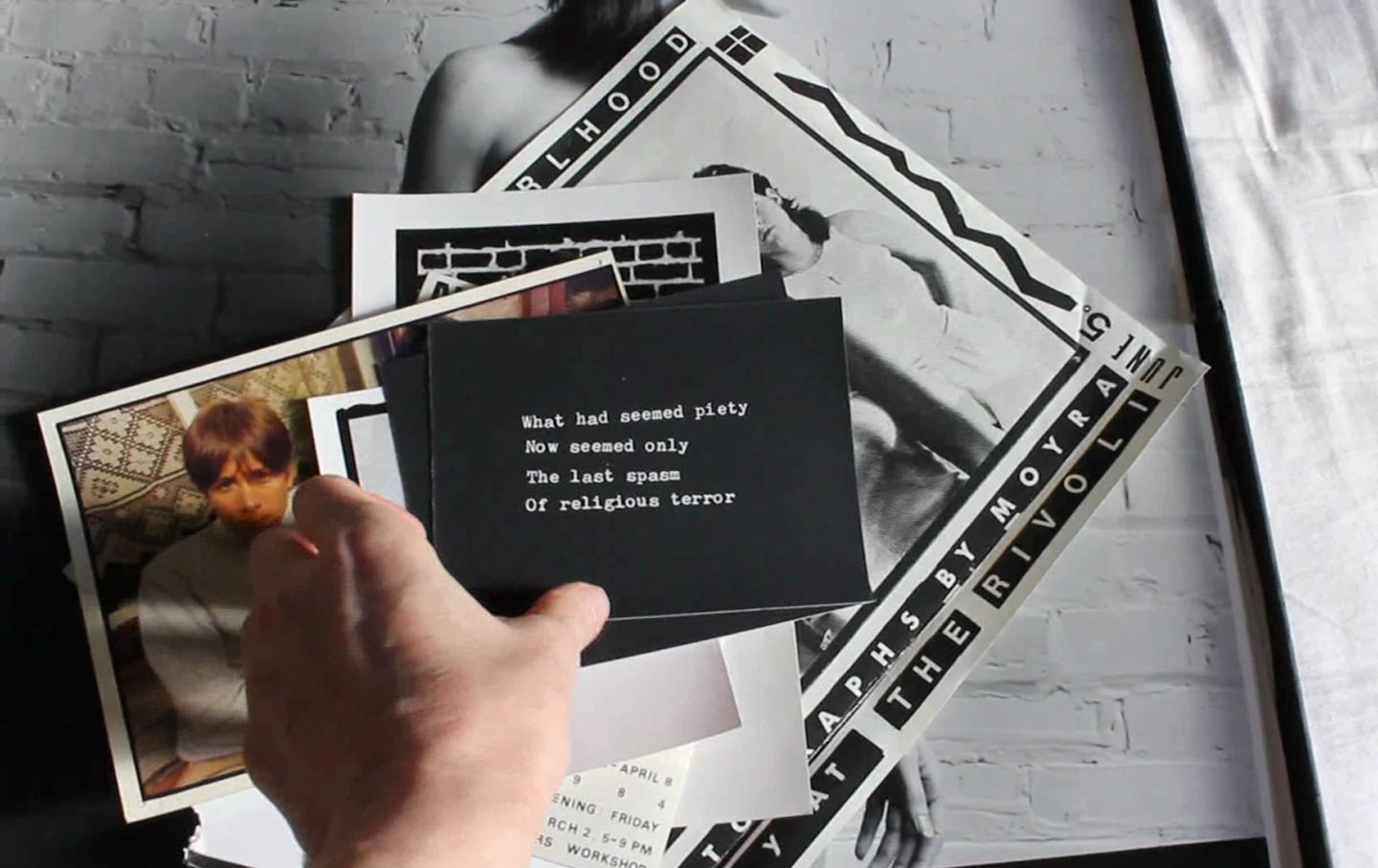
How do we talk politics? Many months away from the presidential election, I’m already tired of our current discussion. The news is full of conversations that don’t work: recaps of overcrowded debates, endless fact checking, and GIFs of candidates’ faces. Also not helpful for political inspiration: long policy papers that no one but reporters and political junkies will read. And certainly the least useful: the screaming and shouting led by reality-show candidate Donald Trump.
My eyes are already glazed over, and we’ve made it only as far as the New Hampshire primary. To get a thoughtful perspective on political change, I’m turning to artists. Their work is offering another view, whether through calls to action, soft reflection, or somewhere in between. Turning down the volume and slowing down the pace has its rewards.
The Brooklyn Museum and the Guggenheim have radically different experiences on offer. “Agitprop!” at the Brooklyn Museum looks at the continuity of political struggle until the current moment, while “Photo-Poetics: An Anthology” at the Guggenheim focuses on the immediacy of everyday lives.
Image courtesy of Brooklyn Museum, © Jonathan Dorado
“Agitprop!” hits you hard at first glance. This Brooklyn Museum exhibition mixes five historical case studies with 20 contemporary art projects, national and international. Many of the works drive towards direct action. Soviet posters and suffragette banners fight for your attention as you enter the Sackler Center for Feminist Art. So many messages in conversation with each other could be empowering, but in this case they feel overwhelming, much like the campaign trail I’m trying to tune out. With such constant bombardment, it’s hard to learn any new lessons.
In many of these works, language drives the art: Posters from Gran Fury, Guerrilla Girls, and Dyke Action Machine! focus on wordplay rather than power through imagery. The exhibition works best with space to breathe; Urgent Visions, a mural by Egyptian street artist Ganzeer unfolds as it would on the block. The form of a woman shielding her face from harassment reads clearly without subtitles. Similarly, Adejoke Tugbiyele’s Gele Pride Flag patchworks bright head wraps into an LGBT pride flag—an international symbol made personal and tactile. You get the impact of an international protest woven into the textiles of West Africa.
The exhibition stumbles when documenting performance as protest, from John Lennon and Yoko Ono’s bed-ins to Los Angeles Poverty Department’s jazz processions to Dread Scott’s On the Impossibility of Freedom in a Country Founded on Slavery and Genocide. Watching past performances on video screens made me feel like I missed the party. There’s an immediacy of relationship and reaction with performance in protest that just reads as dull after the fact. Political art that combines a cultural imperative and some imaginative space make the most impact.
Image courtesy of Solomon R. Guggenheim Museum, New York
“Photo-Poetics: An Anthology,” on the other hand, captures the politics of the everyday. Ten contemporary artists share their perspectives through reflective photographs, videos, and slides. Looking through the viewfinder of others can be more effective than receiving slogans. “Photo-Poetics” isn’t advertised as a feminist show, but seeing the world through the lens of (primarily) women photographers is still rare, both in museums and in popular media.
Spread out on three floors, the show starts with the rich and slightly disorienting work of Leslie Hewitt. Her Riffs On Real Time series layers personal snapshots over archival magazine images over rec-room textures, offering a nuanced view of black life often missing in these frantic times. Likewise, Morya Davey’s hour-long video Les Goddesses personalizes women’s bodies and choices. Even her installation is intimate, making viewers sit on a shared couch as they listen to her voice and look into her apartment. Davey braids together stories about her sisters, contrasting their experiences with those of the 18th-century feminist theorist Mary Wollstonecraft. Davey’s portraits of liberated women alternate between adventure and disaster.
Meanwhile, Lisa Oppenheim and Kathrin Sonntag use slide carousels to rotate their images in a meditative immersion. These works bring us back to photography as a tactile craft, slowed down from the flood of social media selfies.
In the end, art provides space for both reflection and action. The campaign cycle is only driving us to one point: the ballot cast in November. But without an accurate reading of the social movements that brought us to this point, or the tenuous relationships connecting our society, we probably won’t make an informed choice about future governance.
Tiffany BradleyTwitterTiffany Bradley is executive producer of Colored Criticism. She works at the intersection of contemporary art, social justice, and Millennial culture.